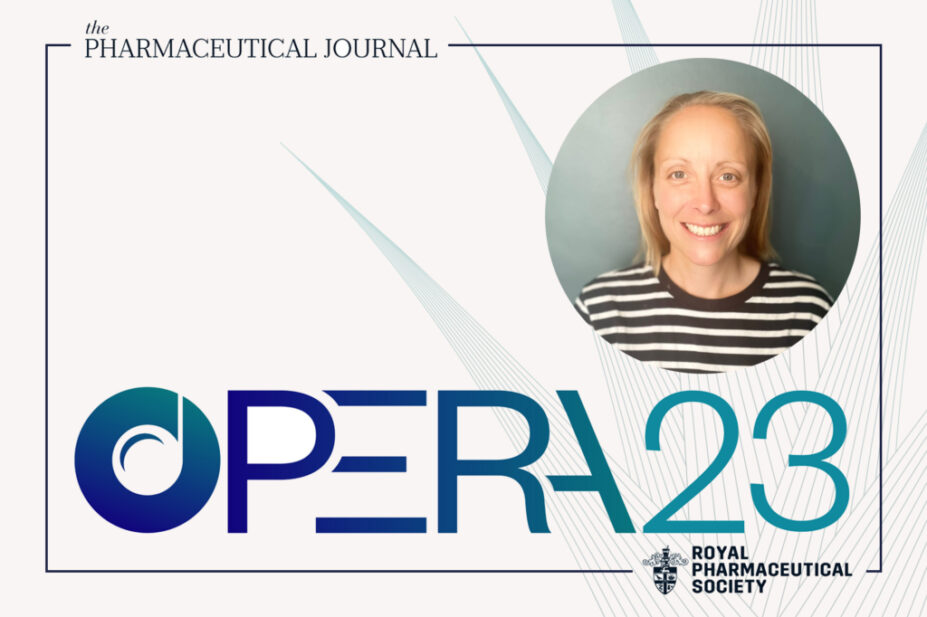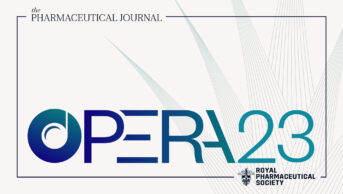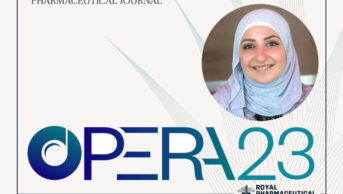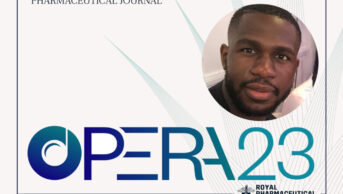
There are not many pre-doctoral students who can change international prescribing practice within months of their research publication, but this is exactly what happened when Victoria Speed used population pharmacokinetic (PK) modelling and real-world data to show that fixed-dose rivaroxaban can be used in extremes of bodyweight.
Victoria graduated from the University of Manchester and completed her preregistration training in 2010. Following several specialist rotations, she established herself as an anticoagulation pharmacist at King’s College Hospital NHS Foundation Trust in 2014, working with patients as direct oral anticoagulants (DOACs) were beginning to become established as standard care in the UK.
The emergence of DOACs has transformed the patient experience for millions of people, but they have been rolled out cautiously to certain patient groups. In 2016, the Anticoagulation Forum issued guidance suggesting that DOACs should be avoided in patients with venous thromboembolism (VTE) at extremes of body weight, pending the availability of efficacy data.
“When direct oral anticoagulants came along, it changed everything,” Victoria explains. “Suddenly there were all these new questions being asked about whether certain patients could be switched to these new treatments and no-one seemed to have answers to them.”
In 2016, Victoria initiated a study utilising real-world data on patient plasma concentrations, already being generated through routine care, alongside PK modelling to answer this urgent clinical question. In 2020, Victoria published her model and, in March 2021, the International Society on Thrombosis and Haemostasis published updated guidance for DOAC prescribing in obesity, citing the model and simulation studies derived by Victoria’s data. The impact of this change was felt in anticoagulation clinics everywhere.
Victoria’s clinical instincts and research skills were also at the fore during the COVID-19 pandemic, when a sudden increase in high international normalised ratio (INR) results was observed during the first UK lockdown in 2020.
“I remember the day, it was the 17 April 2020, and I wrote three or four prescriptions of vitamin K — I never write prescriptions for vitamin K and I never have to get them urgently couriered because [the patient] can’t come into the hospital.”
Victoria was able to use her research skills to perform root-cause analysis of the increased INR results being recorded, the results of which were rapidly disseminated within the anticoagulation community. The analysis was further escalated to the Medicines and Healthcare products Regulatory Agency, resulting in amended guidance.
Victoria’s clinical academic career is on a fast trajectory. Her post-doctoral work now includes an active research programme in anticoagulation at King’s Thrombosis Centre, at London’s King’s College Hospital, with several international collaborations in combination with a new role as a clinical informatician at the Bennett Institute for Applied Data Science at the University of Oxford. She is currently in the early stages of designing a study to investigate the use of DOACs in frail older adults.
Victoria is now building on her initial success as a researcher and is sharing the expertise she has gained in PK modelling and simulation to equip colleagues and the next generation of pharmacists with the skills needed to answer their own clinical questions.
“The platform I now have is allowing me to share what I have learned in my teaching sessions with undergraduate students, where we make the model and do simulation studies using relatable examples from the clinic,” she says.
Panel comments
“Eleven publications in Q1 journals and conference abstracts. Strong evidence on impact (changed international prescribing practice). Evidence of creativity and independence is also presented. Public engagement is mentioned.”
Publications
Population Pharmacokinetics
Speed V, Green B, Roberts LN et al. Fixed dose rivaroxaban can be used in extremes of bodyweight: a population pharmacokinetic analysis. Journal of Thrombosis and Haemostasis 2020;8(9):2296-2307. doi: 10.1111/jth.14948
NIHR Portfolio Multicentre Observational Study – The FIRST Registry
Müller S, Tittl L, Speed V et al. Pooled Analysis of Rivaroxaban therapy for acute venous thromboembolism in FIRST registry, SWIVTER and DRESDEN NOAC registry. 2022;6(7):e12829. doi: 10.1002/rth2.12829
Speed V, Auyeung V, Patel JP et al. Adherence to rivaroxaban for the treatment of venous thromboembolism – Results from the FIRST Registry. Res Pract Thromb Haemost 2021;5(8):e12614. doi: 10.1002/rth2.12614
Speed V, Patel JP, Cooper D et al. Rivaroxaban in acute venous thromboembolism: UK prescribing experience. Res Pract Thromb Haemost 2021;5(7):e12607. doi: 10.1002/rth2.12607
Speed V, Patel JP, Roberts LN et al. UK real-world experience of prescribing rivaroxaban for acute venous thromboembolism in obesity: Results from the FIRST Registry. Thromb Res 2021;197:16-19. doi: 10.1016/j.thromres.2020.10.021
Managing anticoagulation in the COVID-19 pandemic
Speed V, Patel RK, Byrne R et al. A perfect storm: Root cause analysis of supra-therapeutic anticoagulation with vitamin K antagonists during the COVID-19 pandemic. Thromb Res 2020;192:73-74. doi: 10.1016/j.thromres.2020.05.024
Patel R, Czuprynska J, Roberts L et al. Switching warfarin patients to a direct oral anticoagulant during the Coronavirus Disease-19 pandemic. Thromb Res 2021;197:192-194. doi: 10.1016/j.thromres.2020.11.004
Gee E, Pol A, Kittoe K et al. Keeping warfarin patients safe during the COVID-19 pandemic: review of an INR self-testing programme. Br J Nurs 2022;31(3):142-6. doi: 10.12968/bjon.2022.31.3.142
Fisher L, Speed V, MacKenna et al. Potentially inappropriate prescribing of DOACs to people with mechanical heart valves: A federated analysis of 57.9 million patients’ primary care records in situ using OpenSAFELY. Thromb Res 2022;211:150-3. doi: 10.1016/j.thromres.2022.01.023
Anticoagulation, thrombosis and women’s health
Speed V, Roberts LN, Patel JP et al. Venous Thromboembolism and Women’s Health. Br J Haematol 2018;183(3):346-363. doi: 10.1111/bjh.15608
Speed V, Patel JP & Arya R. Bleeding issues in women prescribed anticoagulation. Thrombosis Update 2021;5:100068. doi: 10.1016/j.tru.2021.100068
You may also be interested in

The 2023 ‘Outstanding Pharmacy Early-career Researcher Award’ judging process

Atheer Awad
